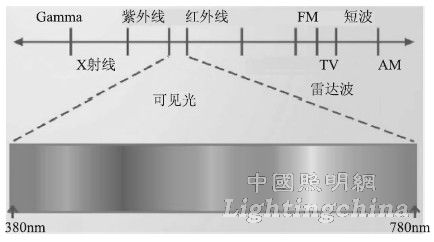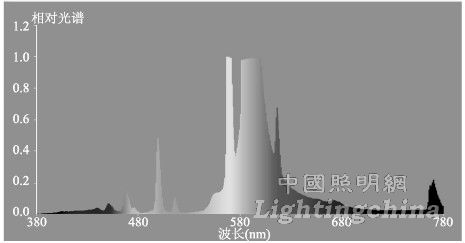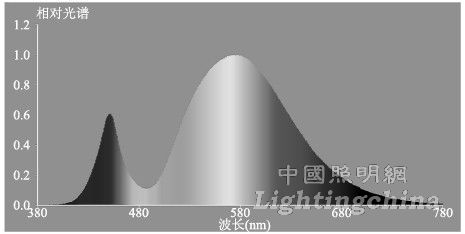In the process of LED being gradually promoted to road lighting, replacing traditional high-pressure sodium lamps, some misunderstandings appeared in the light color. Some people over-emphasized that the color produced by LED must be the same as that of traditional high-pressure sodium lamps, and it is considered that the wear of LEDs is not as high as that of high voltage. Sodium lamp; In view of these views, this paper analyzes from the perspective of theory and practical application, so that readers can have a deeper understanding of LEDs and traditional sodium lamps in terms of color and spectrum.
In the road lighting, there is a big misunderstanding about the penetration of LED street lamps for heavy fog. Most people have always thought that the penetration of LED street lamps is lower than that of traditional lighting sources, which is a misunderstanding. Most people see some information from the Internet or see some sensory feelings on the road. They do not make scientific assessments and analysis, so that the light penetration of LED street lamps is poor. A scientific analysis of this situation will be made in this paper.
We all know that the range of visible light is between 380 nm and 780 nm, and the light in this range is acceptable and recognizable by the human eye. As shown in Figure 1.

Figure 1 Spectral range of visible light
That is to say, all the lamps have the use value only in the light of this band, and the human eye is unrecognizable in this range. The analysis of penetration in this paper is also only carried out within this range. Below are the visible spectra of high pressure sodium lamps and LEDs.

Figure 2 Visible spectrum of high pressure sodium lamp (Shanghai Yaming)

Figure 3: Visible spectrum of LED (Shanxi Coslight Semiconductor)
It can be seen from the spectrum that the spectrum of the LED is much more comprehensive than that of the sodium lamp. The peaks of both are at 580 nm, and the blue portion of the LED only accounts for about 6% of the total luminous flux, while the sodium lamp has almost no. The red light area of ​​the LED is distributed more widely than the high pressure sodium lamp.
The effects of foggy and rainy days on road lighting are mainly reflected in: The drop in the penetrating force caused by the scattering of suspended particles and raindrops in the fog directly leads to a decrease in illumination intensity. The theory of scattering of light from particles in the air is mainly based on Rayleigh's law of scattering and the law of Mi-Debye's scattering. The law of scattering in the visible range is as follows: r is the radius of the particle; when r < 0. 037μm, it is subject to Rayleigh. The law of scattering obeys the Mi-Debye scattering law when r > 0. 037μm. The scattering effect of Rayleigh's law on light is related to the wavelength, and the scattering effect of the meter-Debye scattering law on light is not affected by the wavelength. The size distribution of the suspended particles in the mist and in the rain is as follows: The mist is 2. 8 μm to 10 μm, and the raindrops are 10 μm to 5000 μm. Since the particles are larger than 0. 037 μm, the light scattering in foggy and rainy days is not related to the wavelength. That is to say, the penetration force in road lighting is not related to the color of the lamp. The penetration of the LED is the same as that of the sodium lamp.
Traditional experience may feel that the penetration of sodium lamps is relatively strong, which is only a perceptual understanding. Since the light of the sodium lamp is dark yellow, the light of the led light is white light, and the heavy fog is white. It is certainly much easier for people to find a sodium lamp in a white background than a led lamp found in a white background. As shown below:

Figure 4 Resolution of colors in a white background
Other colors found in the white background shown above are much easier than white found in white backgrounds. This effect can be useful in other areas of lighting, but it is useless in the field of road lighting. The main focus is on the lighting effect in the direction of the road.
In road lighting, especially when there is heavy fog, the color rendering index is not negligible. The color rendering index of the sodium lamp is about 65 to 80. Due to the lack of blue spectrum of the sodium lamp, the color rendering index of the sodium lamp is low. The blue object will appear black under the illumination of the sodium lamp, that is, when the light of the sodium lamp is irradiated onto the blue object, the object does not emit light. This will cause when there is a pedestrian wearing blue clothing or a blue obstacle on the road. Under the illumination of the sodium lamp, there is no reflected light on the blue object, so that the blue object will be submerged in the background light in the fog. People will not see blue objects. This will lead to traffic accidents. This is not the case with LED lighting.
On the second level, I would like to talk about which color temperature light source is better for road lighting. The high-pressure sodium lamp used in the existing road lighting, the light source color table is orange, the color is dim, and it belongs to the relatively strong warm color light; this color tone reflects a brilliant light and temperature feeling in the night illumination, especially in the weather comparison. In the cold season, walking will be very comfortable. However, the high-pressure sodium lamp has a low color rendering index, which greatly affects the recognition of the surrounding objects by the human eye in lighting applications, which is not conducive to action safety; the orange light can bring a more comfortable sensory feeling in the cold season. But on a hot summer evening, the intense warmth adds to the heat of the people, making people who are enjoying the cold at night feel very uncomfortable. Moreover, people travel and exercise in summer nights far more than the cold season; moreover, in the vast southern regions of China, the proportion of high-temperature weather in the year is larger in the whole year. In this sense, a high-pressure sodium lamp with a warm color and a low color rendering index is not an ideal source for night illumination.
In the early days of LED street lamps used in road lighting, some manufacturers pursued high-efficiency and visual brightness, and chose a cool white light source with a high color temperature, usually greater than 6000K, for road lighting. White LEDs are used in road lighting, and their high color rendering characteristics fully demonstrate the advantages in road lighting. However, due to the high proportion of the blue light spectrum, the LED with higher color temperature has strong stimulation to the human eye, and the colder color makes the road lighting lack of vitality and agility, and the overall lighting effect is pale and deserted. Therefore, it is not advisable to use such high color temperature lighting for lighting in road lighting.
After repeated practical tests and research, we recommend using an LED light source with a color temperature of 3500K-4000K in road lighting. The color temperature range of the light, the light color is more neutral, the sensory interference to the pedestrian is small, whether the pedestrian or the driver acts under this kind of light, the attention will be more concentrated; plus the high color rendering of the LED, Greatly increased driving safety. At present, the coastal highway in Shenzhen uses warm-colored high-pressure sodium lamps and white-light halogen lamps to mix and illuminate, which makes up for the deficiency of the two light sources and shows ideal lighting effects.
The introduction of LED, a new type of light source, into road lighting aims to improve the deficiencies of existing lighting sources and improve road lighting quality. Sticking to the original lighting concept, overemphasizing the same lighting effects as the original lighting can not only play the advantages of semiconductor lighting, but also increase the obstacles to the further improvement of road lighting quality. Therefore, it is proposed that LED lighting be viewed in a new way so that LEDs can play a greater role in creating new lighting effects and improving lighting quality.
Edit: Cedar
Aluminum Frame LV 3PH Asynchronous Motor
Aluminum Frame Lv 3Ph Asynchronous Motor,Three-Phase Asynchronous Motor,3 Phase Asynchronous Induction Motor,Aluminum Frame Three Induction Motor
Yizheng Beide Material Co., Ltd. , https://www.beidevendor.com